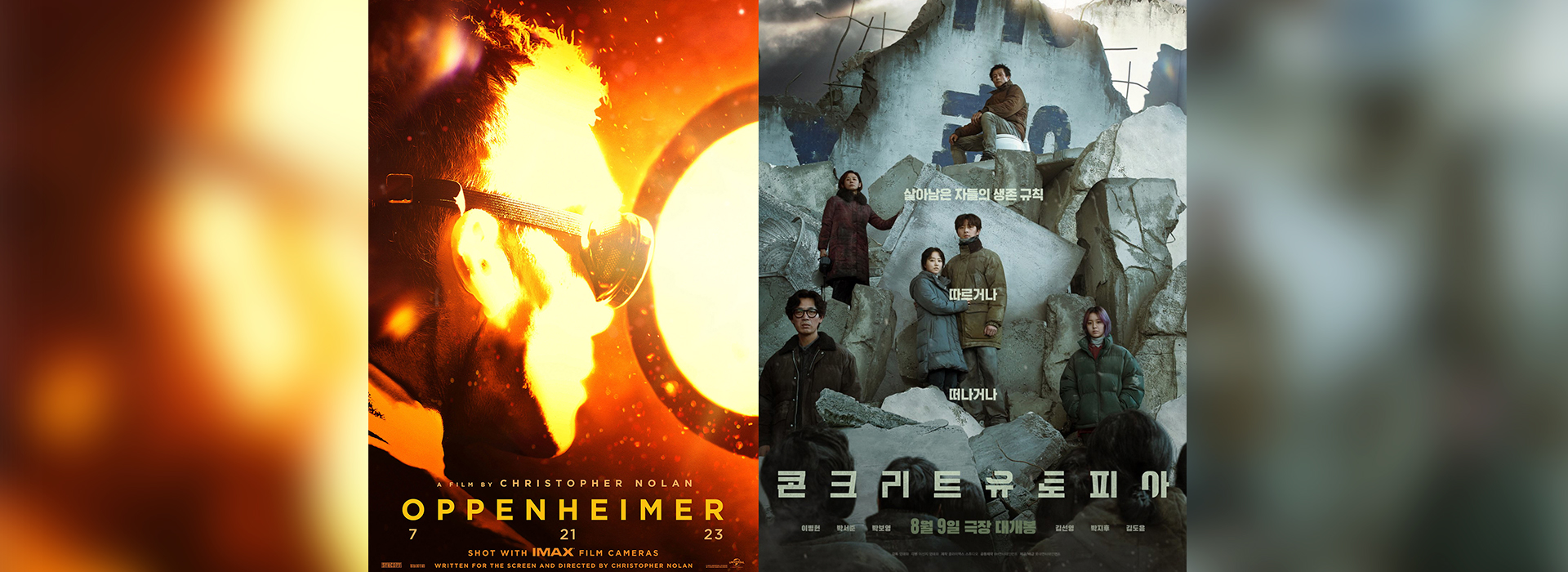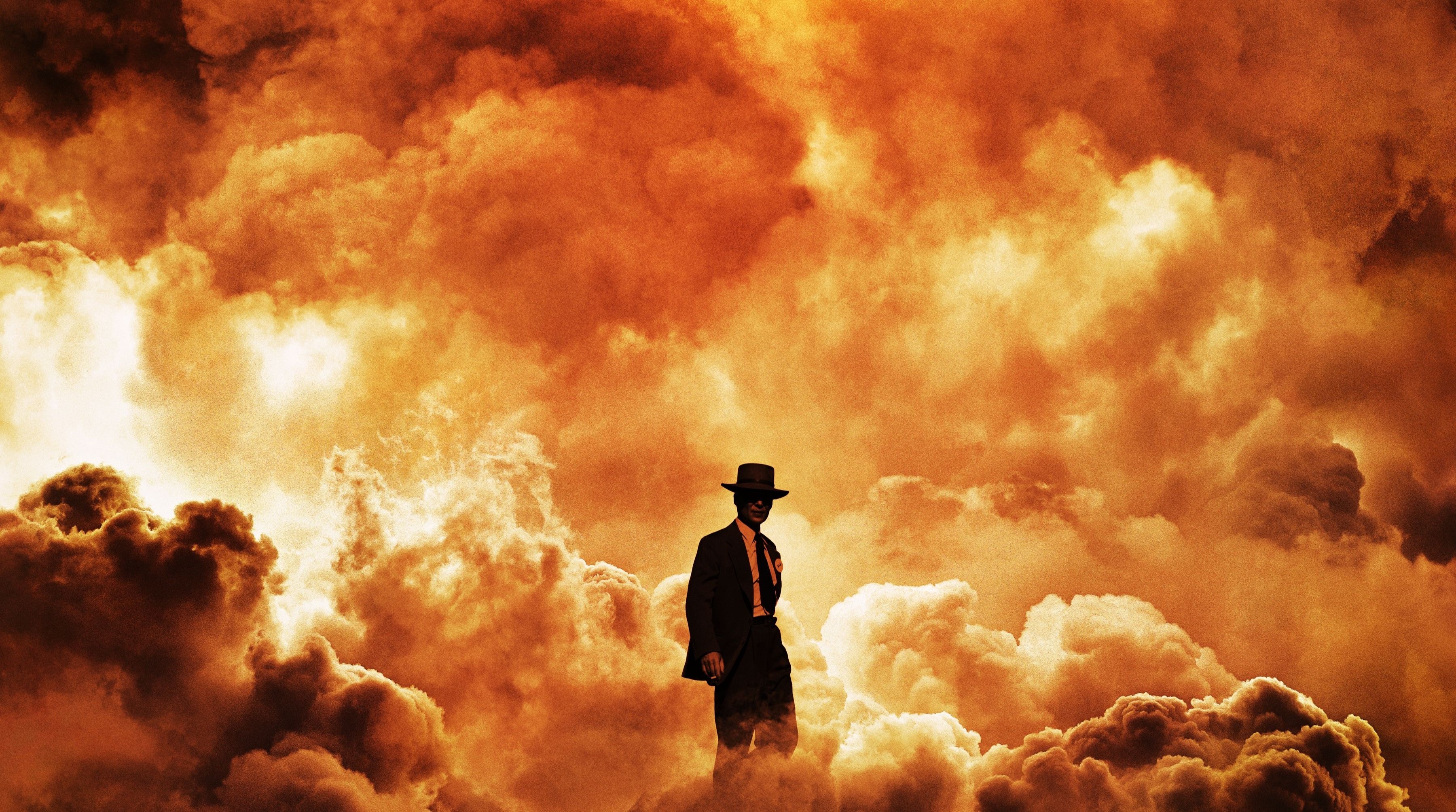
One early morning in May, I was violently awoken by an evacuation warning without an inkling of instructions on where to go. If there had been a meteor or a bomb coming, I guess I would have had no choice but to die at home, holding onto my dog. I say this both because shelters don’t allow pets, but also because, at least to my way of thinking, the horrors of living through evacuation in a time of war or major disasters outweigh my fear of death. Death has always been a part of the human experience, but the idea of humankind going extinct was an unthinkable idea until a generation earlier. Now, with climate change accelerating and democracy in retreat across the globe, the end times are suddenly starting to feel very real. Perhaps what frightens us most isn’t the very moment that triggers the end, but the foreboding leading up to it, and the life that awaits for those who manage to survive. Perhaps this whole process is what we mean by the “apocalypse.”
-
 ©️ Universal Pictures
©️ Universal Pictures
Director Christopher Nolan’s Oppenheimer is a retelling of J. Robert Oppenheimer’s role in overseeing the Manhattan Project—the series of experiments that led to the development of the atomic bomb and made total annihilation of the human race possible at the hands of none other than mankind itself. Compared to some of Nolan’s previous works and their infamous deconstruction of time and space, his latest film is relatively easy to follow. The film focuses on two key moments in the life of Oppenheimer (Cillian Murphy): a 1954 hearing, during the height of McCarthyism, where the physicist’s actions during World War II are labeled anti-American, and a separate 1959 hearing where Lewis Strauss—who antagonized Oppenheimer in the previous hearing—is investigated by the Senate in seeking to become the U.S. Secretary of Commerce. Extraordinarily enough, Nolan wrote the screenplay in first person, with scenes that represent Oppenheimer’s subjective view filmed in color, while the 1959 hearing is shot in a distant black and white. The former is given the title “Fission” on-screen; the latter, “Fusion.” Nuclear fission is the principle that made the atomic bomb possible; nuclear fusion is what engendered the even more destructive power of weapons of mass destruction.
It’s a well-established fact that Nolan’s movie is based on the 2005 biography American Prometheus. Quality of the book and Oppenheimer’s genius aside, we need to ask whether this comparison of the physicist to the mythical Titan is appropriate. In the legend, Prometheus heroically steals fire from the gods and gives it to humanity, representing the beginning of civilization. Compare this to the atomic bomb, which is solely a tool of destruction. Although the original intent behind creating the bomb was to end World War II, experiments nonetheless continued after Germany surrendered, claiming countless lives and triggering the Cold War arms race. Should we also compare the inventor of the gun to Prometheus? It’s true that groundbreaking research into energy is the domain of a scientist, but the Manhattan Project required resources on a scale that only the government and military could ever provide, so no scientist could ever have believed those parties wouldn’t take advantage of the results of the study.
Regardless, Nolan took a three-hour film stuffed with physics and turned it into a Hollywood summer blockbuster. The director has said he views “Oppenheimer as the most important person who ever lived” and that he believes, “whether we like it or not, we live in Oppenheimer’s world, and we always will.” Oppenheimer has most commonly been compared against the films JFK and The Social Network, the former being a mosaic of the records of President John F. Kennedy’s assassination, and the latter an examination of the rise of the new group of powerful elites through Mark Zuckerberg’s story. Nolan’s film, however, stays largely within the bubble of the Los Alamos Laboratory where the Manhattan Project was carried out, and within the mind of its genius physicist leader. Needless to say, every film considers its scope and chooses its perspective based on its intended purpose. When people criticize the movie for not showing the bomb falling on Japan, or for not taking the perspective of the victims, they’re missing the point entirely. Here in the 21st century, we naturally expect a film dealing with Oppenheimer’s story will touch upon a particular dilemma. As we see in the introduction to Nolan’s film, Oppenheimer was well-versed in both the arts and humanities as well as physics and astronomy. He was an outstanding intellectual, captivated by how the then-new paradigm of quantum mechanics provided a unique 20th-century way of looking at the world. He was also a pragmatist, and a patriotic American who believed that science could improve society. No doubt he made the Manhattan Project his personal mission when intelligence gathered that the Nazis were experimenting with an atomic bomb of their own, with Oppenheimer determined to have the U.S. win the race against their genocidal enemy. But the atomic bomb was ultimately a weapon of mass destruction that ran counter to the idea of human progress. It’s safe to assume that Oppenheimer’s biggest dilemmas in life were whether he should stay on with the Manhattan Project after Hitler committed suicide and the Germans surrendered, and whether he could be a part of the Atomic Energy Commission but no longer be involved with weapons of mass destruction. Strangely enough, Nolan’s Oppenheimer script avoids touching on either dilemma. Aspects of the physicist’s inner conflict are only touched upon briefly and in vague terms in testimonial form, or glossed over entirely. Even though he’s quick to realize the potential for disaster in the latter half of the film, Oppenheimer nevertheless walks, like Jesus, toward tragedy, and his need to atone for the suffering he brings upon others is only mentioned in passing by another character. Throughout the entire run of the film, the eloquent speaker who would famously fill his lecture halls with eager listeners, never once fully voices his inner conflict.
Fortunately, the movie doesn’t attempt to justify Oppenheimer’s actions. Nolan fosters an attitude closer to awed fascination than one of worship. The avoidant attitude taken on by the movie may have been an inevitable consequence of how inadequate explanations can be for expressing such awe and fascination. It won’t be a stretch to “accuse” Nolan of identifying with his film’s protagonist. Oppenheimer wasn’t summoned by the government—he was the mastermind behind the entire Manhattan Project by choice, right from the choosing of the laboratory. It’s no wonder that one of this generation’s most talented and successful Hollywood directors empathizes with him. And speaking of empathy, Nolan has long been criticized for his weak characterization of emotions, flimsy dialogue, and poorly fleshed out female characters. For this reason, some reviews happily point out that the director finally dealt with these shortcomings by focusing on the inner workings of a single character in Oppenheimer. But did he really? Did audiences feel like they were any closer to understanding Oppenheimer the man after watching the movie? On the contrary, the film’s goal seems to be to make the physicist as incomprehensible as possible to the average viewer. In his first meeting with Oppenheimer, General Leslie Groves (Matt Damon) describes him as “a dilettante, a womanizer, a suspected communist, unstable, theatrical, romantic.” I was taken aback when I heard this line spoken one hour into the movie. I didn’t feel like I was watching the same character he was describing. What Nolan chooses to show us of Oppenheimer’s actions tells us nothing of his personality; the whole film is one expertly laid aphorism. Oppenheimer was obviously a morally ambiguous figure, but he was unswayed by others—he oversaw human tragedy on an immense scale without falling apart. But, having watched this movie about him, it’s difficult to know how much of that strength was really there. Does Oppenheimer really tell us more about humanity’s perplexing decision to self-destruct and the minds behind that decision than Dr. Strangelove did 60 years earlier in a more poetic tongue?
There’s nothing boring about Oppenheimer. Waiting on the outcomes of the two hearings and the Trinity test make for three-way suspense throughout. There’s none of Nolan’s signature awe-inspiring action sequences to speak of here, but Oppenheimer is a kind of spectacular detonation in itself. The true spectacle in this film is the vast universe of Oppenheimer’s genius, the constellation-like web of top scientists and powerful people, and, crucially, images of the Trinity test but none of the devastating death that followed. Nolan is more obsessed with delicately portraying power than any other artist working today. When the type of power he’s dealing with is time and space (as in Dunkirk or Memento), his movements are as beautiful as Swiss clockwork. But his work becomes rigid when he tries to deal with the imperfections and unpredictability of real humans. The definition of “spectacle” is something whose visuals have a great impact. The mushroom clouds over Hiroshima and Nagasaki in August 1945 that led to Japan’s surrender are the most powerful images, and therefore spectacles, in history. Ultimately, Oppenheimer is more a daring continuation of Nolan’s body of work than an entirely new vision.
-
©️ Lotte Entertainment
Unauthorized reproduction and distribution prohibited.
